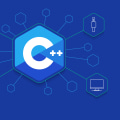Python and Python and Javascript are both popular programming languages that have been around for over two decades. While Python is an object-oriented language, Javascript is a dynamic and versatile language that has been used to create a wide variety of applications, from business software to games. In this article, we will explore the features and capabilities of both Java and Javascript, as well as their advantages and disadvantages. We will also look at how they can be used for different types of projects, and why they are still popular choices for developers today, alongside other languages such as C++.For those looking to learn more about Java and Python, Spires Online Computer Science Tutors offer comprehensive courses to help you understand these languages better. Python and Javascript are both popular programming languages that have been around for over two decades. While Python is an object-oriented language, Javascript is a dynamic and versatile language that has been used to create a wide variety of applications, from business software to games. In this article, we will explore the features and capabilities of both Java and Javascript, as well as their advantages and disadvantages. We will also look at how they can be used for different types of projects, and why they are still popular choices for developers today, alongside other languages such as C++.For those looking to learn more about Java and Python, Spires Online Computer Science Tutors offer comprehensive courses to help you understand these languages better. are both popular programming languages that have been around for over two decades. While Python is an object-oriented language, Javascript is a dynamic and versatile language that has been used to create a wide variety of applications, from business software to games. In this article, we will explore the features and capabilities of both Java and Javascript, as well as their advantages and disadvantages. We will also look at how they can be used for different types of projects, and why they are still popular choices for developers today, alongside other languages such as C++.For those looking to learn more about Java and Python, Spires Online Computer Science Tutors offer comprehensive courses to help you understand these languages better. Python and Javascript are both popular programming languages that have been around for over two decades. While Python is an object-oriented language, Javascript is a dynamic and versatile language that has been used to create a wide variety of applications, from business software to games. In this article, we will explore the features and capabilities of both Java and Javascript, as well as their advantages and disadvantages. We will also look at how they can be used for different types of projects, and why they are still popular choices for developers today, alongside other languages such as C++.For those looking to learn more about Java and Python, Spires Online Computer Science Tutors offer comprehensive courses to help you understand these languages better. .For those looking to learn more about Java and Python, Spires Online Computer Science Tutors offer comprehensive courses to help you understand these languages better. Python and Javascript are both popular programming languages that have been around for over two decades. While Python is an object-oriented language, Javascript is a dynamic and versatile language that has been used to create a wide variety of applications, from business software to games. In this article, we will explore the features and capabilities of both Java and Javascript, as well as their advantages and disadvantages. We will also look at how they can be used for different types of projects, and why they are still popular choices for developers today, alongside other languages such as C++.For those looking to learn more about Java and Python, Spires Online Computer Science Tutors offer comprehensive courses to help you understand these languages better. are both popular programming languages that have been around for over two decades. While Python is an object-oriented language, Javascript is a dynamic and versatile language that has been used to create a wide variety of applications, from business software to games. In this article, we will explore the features and capabilities of both Java and Javascript, as well as their advantages and disadvantages. We will also look at how they can be used for different types of projects, and why they are still popular choices for developers today, alongside other languages such as C++.For those looking to learn more about Java and Python, Spires Online Computer Science Tutors offer comprehensive courses to help you understand these languages better. Python and Javascript are both popular programming languages that have been around for over two decades. While Python is an object-oriented language, Javascript is a dynamic and versatile language that has been used to create a wide variety of applications, from business software to games. In this article, we will explore the features and capabilities of both Java and Javascript, as well as their advantages and disadvantages. We will also look at how they can be used for different types of projects, and why they are still popular choices for developers today, alongside other languages such as C++.For those looking to learn more about Java and Python, Spires Online Computer Science Tutors offer comprehensive courses to help you understand these languages better.
Whether you are new to programming or have some experience, this article will give you a deeper understanding of both Java and Python and their many features.
Advanced Java Programming
Java is a popular, object-oriented programming language that is widely used due to its simplicity and powerful features. In this section, we'll explore some of its more advanced concepts, such as inheritance, abstraction, polymorphism, and interfaces.Inheritance
Inheritance is a powerful feature in object-oriented programming languages that allows objects to be created from existing classes of objects. This allows the programmer to reuse code and create new classes of objects that share the same characteristics as existing classes. For example, a programmer could create a class called “Car” and then create subclasses such as “SportsCar” or “FamilyCar” that share many of the same characteristics as “Car” but have additional features or behaviors specific to each subclass.Abstraction
Abstraction is the process of creating classes that represent real-world objects or concepts.By abstracting away the details of an object, a programmer can focus on the functionality of an application without worrying about the details of how it is implemented. Abstraction also helps with code readability and maintainability, as well as making it easier to reuse code.
Polymorphism
Polymorphism refers to the ability of an object to take on different forms depending on its context. In Java, this is accomplished through method overriding, which allows a class to provide its own implementation for a method defined in its parent class. This allows for greater flexibility when writing code and makes it easier to create code that works with multiple types of objects.Interfaces
An interface is a programming construct that defines a set of methods that must be implemented by any class that implements the interface.Interfaces are useful for creating code that is flexible and extensible, as they allow for classes with different implementations to be used in the same context. They also provide a way for developers to define common behaviors that can be shared across multiple classes.
Getting Started with Java
Getting Started with Java:Java is a popular, object-oriented programming language that is used in many different applications. It is easy to learn, and can be used to create powerful applications. In this guide, we will explore how to get started developing with Java. The first step in getting started with Java is to set up a development environment.This involves downloading and installing the latest version of the Java Development Kit (JDK). Once the JDK has been installed, it can be used to compile and run Java programs. Once the development environment is set up, the next step is to write some basic programs. This involves learning the basics of the Java language, such as variables, data types, classes, methods, and loops. It also involves understanding how to use standard libraries and APIs to perform common tasks. This involves downloading and installing the latest version of the Java Development Kit (JDK). Once the JDK has been installed, it can be used to compile and run Java programs. Once the development environment is set up, the next step is to write some basic programs. This involves learning the basics of the Java language, such as variables, data types, classes, methods, and loops. It also involves understanding how to use standard libraries and APIs to perform common tasks.
Finally, debugging errors is an important part of developing with Java. This involves understanding common errors and how to troubleshoot them. There are many tools available for debugging errors, such as debuggers and loggers. By following these steps, you can quickly get started developing with Java. Java is a popular, object-oriented programming language used for creating applications.
This guide has explored the basics of getting started with Java, as well as advanced topics such as Java programming. The key concepts discussed included understanding the Java Runtime Environment (JRE), writing code with the Java Virtual Machine (JVM), and leveraging APIs to create applications. Java is an efficient, reliable language that offers developers a range of options for creating powerful applications. Thanks to its versatility, scalability, and ease of use, Java continues to be a popular choice for many developers.
With its comprehensive set of features and libraries, it's easy to see why Java has become one of the most widely used programming languages.











